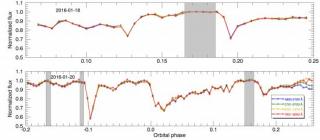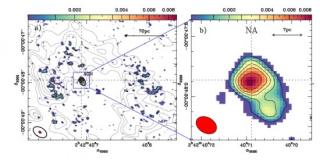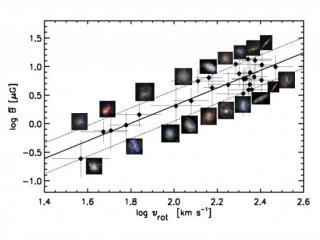![Ks/F814W flux ratio (or extinction map) with emission line contours of the [OIII] gas in green. The brighter regions denote higher extinction and hence dust absorption. The conical morphology of the ionized gas is clearly defined by a horned-shaped dust s Ks/F814W flux ratio (or extinction map) with emission line contours of the [OIII] gas in green. The brighter regions denote higher extinction and hence dust absorption. The conical morphology of the ionized gas is clearly defined by a horned-shaped dust s](/sites/default/files/styles/crop_square_2_2_to_320px/public/images/news/resultados162_178.jpg?itok=Jo2BKJIF)
In some AGN, nuclear dust lanes connected to kpc-scale dust structures provide all the extinction required to obscure the nucleus, challenging the role of the dusty torus proposed by the Unified Model. In this letter we show the pc-scale dust and ionized gas maps of Circinus constructed using sub-arcsec-accuracy registration of infrared VLT AO images with optical Hubble Space Telescope images. We find that the collimation of the ionized gas does not require a torus but is caused by the distribution of dust lanes of the host galaxy on ~10 pc scales. This finding questions the presumed torus
Advertised on




